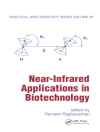Handbook of Museum Textiles
Textiles have been known to us throughout human history and played a vital role in the lives and traditions of people. Clothing was made by using different materials and methods from natural fibers. There are different varieties of textiles, out of which certain traditional textiles, archaeological findings, or fragments are of cultural, historical, and sentimental value such as tapestries, embroideries, flags, shawls, etc. These kinds of textiles, due to their historical use and environmental factors, require special attention to guarantee their long-term stability. Textile conservation is a complex, challenging, and multi-faceted discipline and it is one of the most versatile branches of conservation.
Volume II of the Handbook of Museum Textiles provides precise instruction for conservation techniques to preserve the textile heritage more scientifically and technologically. Additionally, the book covers the most modern techniques used to characterize archaeological textiles and dyes. Progress and innovation in nanotechnology-based interventions in museum textiles are emphasized. Chapters cover the general introduction to biological damage caused by physical and chemical agents and their prevention methods. Information on microscopy and characterization of historical textiles, ancient dyes, and prints is highlighted. Several aspects of assessment of degradation, repair, and stabilization of antique textiles are presented in depth. Experimental research methods for diagnosis and scientific study of fibers and natural dyes using LC-MS and UV-VIS are described. Practical knowledge based on analysis and visualization of historical textiles for the needs of museum conservation, exhibition, digital technology, and virtual museums is addressed as well.
Audience
It will serve as an educational asset and tool for researchers, art scholars, archaeologists, museum curators, and those who are interested in the field of traditional or historic textile collections.
O autorze
Seiko Jose is a scientist at Central Sheep and Wool Research Institute, Avikanagar, Rajasthan, India. He has more than 16 years of experience in textiles of which 7 years in the industry and 9 years in research. He has extensive experience in cotton, silk, and linen processing industries as well as natural and synthetic dyes. Since 2013, he has handled many natural fibers like wool, jute, pineapple leaf fiber, coir, ramie, etc. He contributed to more than 40 international peer-reviewed research papers and 11 book chapters.
Sabu Thomas, Ph D, is the Vice-Chancellor of Mahathma Gandhi University, Kottayam, Kerala, India. He is a fellow of the Royal Society of Chemistry and has been ranked no.5 in India with regard to the number of publications. Prof. Thomas’s research group specializes in the areas of polymers, natural fiber, biocomposites, sorption and diffusion, interpenetrating polymer systems, recyclability and reuse of waste plastics and rubbers, elastomer crosslinking, dual porous nanocomposite scaffolds for tissue engineering, etc. He has published more than 1200 publications as well as over 150 books.
Pintu Pandit, Ph D, is an assistant professor in the Textile Design Department at the National Institute of Fashion Technology under the Ministry of Textiles, Govt. of India, Patna campus. He is a Ph D (Tech.) and M.Tech. in Fibers and Textile Processing Technology from the Institute of Chemical Technology, Mumbai, India. He has published many research articles in SCI journals as well as edited 4 books with the Wiley-Scrivener imprint.
Ritu Pandey, Ph D, is an assistant professor at Chandra Shekhar Azad University of Agriculture & Technology (CSAUAT) Kanpur, India She has 25 years of teaching experience. She has published more than 35 research papers in various national and international journals and her specialist area is in flax.












